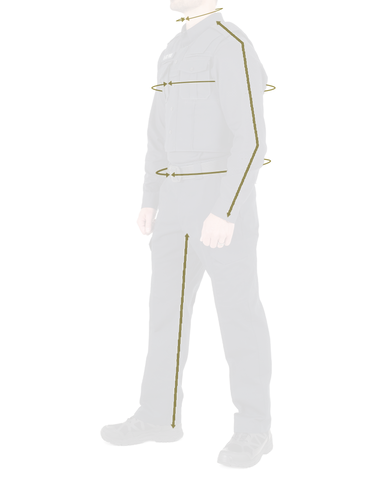Men's Apparel Size Charts

Determining Your Size
Using a measuring tape, measure your body (over your undergarments) & refer to body charts to determine the best size. Measurements refer to body size, not garment dimensions, unless otherwise noted. If you fall between sizes, we recommend ordering the larger size.
How to Measure:
Neck: Measure the largest portion of the neck circumference.
Chest: Measure under arms and around the fullest part of your chest with measuring tape parallel to the floor.
Waist: Take measurement around your waistline, where your belt typically sits.
Arm Length: Slightly bend elbow and measure from the center back of the neck, over top of the shoulder, and down to the wrist.
Inseam: Measure the inseam of pants that fit you well. Place them in a flat position, ensuring both front and back are neatly pressed. Measure from the crotch down to the leg hem along the inseam.
Men's Tops and Outerwear (Inches)


Note: If your measurements fall between sizes, opt for the larger size. Measurements are given in inches and correspond to body measurements.
Length chart refers to garment dimensions.
Men's Tops and Outerwear (Centimeters)


Note: If your measurements fall between sizes, opt for the larger size. Measurements are given in centimeters and correspond to body measurements.
Length chart refers to garment dimensions.
Men's Bottoms

Note: If your waist measurement falls between sizes, opt for the larger size. Measurements shown above correspond to body dimensions.
Men's International Size Conversion

Note: If your measurements fall between sizes, opt for the larger size.

